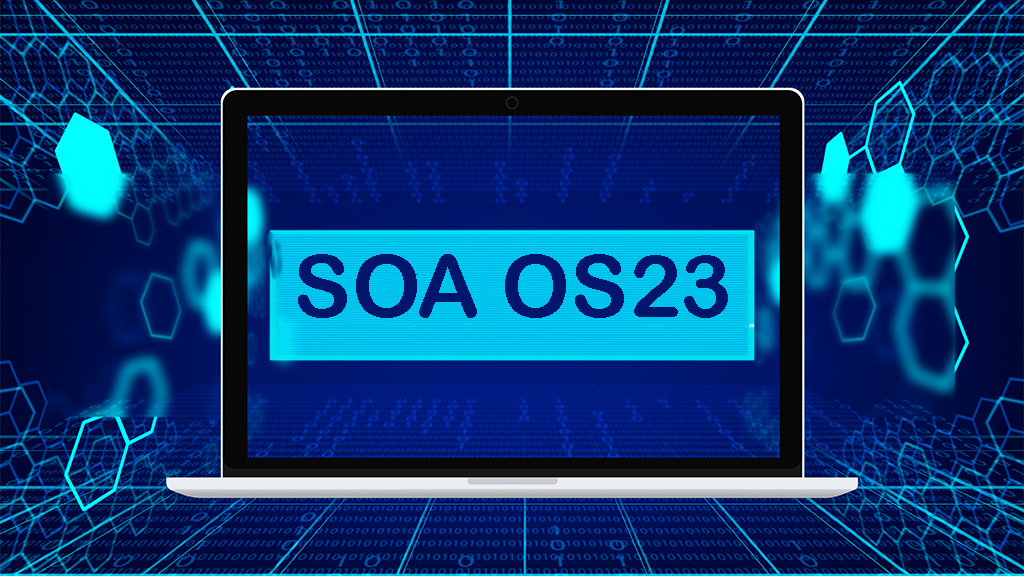Introduction
Technology never stands still. Every few years, new frameworks and approaches appear that promise to solve the challenges of scalability, security, and efficiency. One of the most interesting developments in recent times is SOA OS23, a modern evolution of Service-Oriented Architecture (SOA).
For decades, SOA has been the backbone of enterprise software design. It allowed organizations to break down their systems into modular services, making them easier to maintain and scale. But today’s digital world demands even more flexibility—especially with the rise of cloud-native apps, IoT devices, AI-driven automation, and real-time data processing.
This is where SOA OS23 steps in. Far from being just a minor update, it represents a next-generation shift in how businesses design, deploy, and manage services across complex environments.
In this article, we’ll break down what SOA OS23 really is, why it matters, and how it’s changing industries around the globe.
What is SOA OS23?
At its core, SOA OS23 is not a single product, but rather a modern architectural framework designed to take traditional SOA into the future. Think of it as an “operating system” for service-oriented environments.

It introduces improvements in four major areas:
- Event-Driven Design – Services no longer wait for requests. Instead, they can respond to events in real time, enabling faster decision-making.
- Cloud-Native Flexibility – Built with Kubernetes, containers, and serverless environments in mind, SOA OS23 scales naturally in the cloud.
- Security & Compliance – Zero Trust models, encrypted communication, and compliance engines are built in from the ground up.
- Developer Experience – With low-code dashboards, observability tools like Grafana/Prometheus, and automated service contracts, development and maintenance are smoother than ever.
Why SOA OS23 Matters Today
1. Rising Complexity in Business Systems
Modern organizations rely on ecosystems of apps, microservices, APIs, and IoT devices. Without a strong framework, these systems quickly become tangled and hard to manage. SOA OS23 brings clarity and modularity back into the picture.
2. Security is Non-Negotiable
With cyberattacks growing in both scale and sophistication, companies can’t afford weak points. SOA OS23 integrates Zero Trust principles—meaning every connection is verified, encrypted, and monitored.
3. Cloud and Edge Are the New Norm
Business is no longer limited to data centers. Applications must run across hybrid clouds, public platforms, and even tiny IoT devices. SOA OS23 is designed for this distributed reality.
4. Performance and Efficiency Gains
According to reports, organizations that implemented SOA OS23 saw:
- 75% faster deployment times
- 40% higher reliability
- 60% cost savings
- 80% productivity boost
These numbers are not just hype—they represent real improvements that come from streamlined automation and reduced technical overhead.
Key Features of SOA OS23
1. Event-First Logic
Traditional SOA relied heavily on request/response patterns. OS23 changes this by adopting an event-first model, where services communicate through events, making the system more responsive and resilient.
2. Container and Kubernetes Support
By default, SOA OS23 works seamlessly with container technologies and orchestration platforms like Docker and Kubernetes, giving teams faster deployments and easier scaling.
3. AI-Enhanced Caching and Routing
Performance is further improved with AI-driven caching strategies and intelligent traffic routing, ensuring services remain fast and available even under heavy load.
4. Human-in-the-Loop Design
Automation is important, but OS23 ensures there’s always space for human oversight in critical workflows—especially in compliance-heavy industries.
5. Edge-Optimized Services
With IoT and edge computing on the rise, SOA OS23 provides a lightweight, modular framework for running services directly on smart devices.
6. Observability and Monitoring
Built-in integration with monitoring tools such as Prometheus and Grafana means that organizations gain deep visibility into how services are performing.

Real-World Applications of SOA OS23
- Finance & Banking – Handling millions of transactions securely while meeting strict compliance rules.
- Healthcare – Powering IoT-based patient monitoring, secure record sharing, and AI-driven diagnostics.
- Manufacturing – Enabling predictive maintenance with IoT sensors, edge processing, and real-time analytics.
- E-Commerce – Scaling to meet demand spikes, ensuring faster checkouts, and preventing fraud with AI security.
- Smart Cities – Managing transportation systems, utilities, and emergency responses through connected devices.
SOA OS23 in Italy: The Certification Angle
Interestingly, “SOA OS23” has another meaning in Italy’s construction and public works sector. In this context, OS23 refers to a certification category for demolition projects.
Companies bidding on public contracts often require this certification to prove they can handle controlled demolitions safely and in compliance with regulations.
READ ALSO: Wollmatten Explained: Natural Wool Mats for Health, Comfort & Eco-Friendly Living
While this usage is very different from the digital architecture meaning, it highlights how SOA OS23 is a term with dual importance—one in technology, and another in public infrastructure compliance.
Benefits of SOA OS23
- Stronger Security with Zero Trust models.
- Better Performance through AI-optimized workloads.
- Cloud-Ready architecture built for hybrid and multi-cloud environments.
- Flexibility to run across cloud, on-premise, and edge devices.
- Developer-Friendly Tools that speed up adoption.
- Future-Proofing against the growing demands of IoT, AI, and real-time data.
Challenges and Considerations
Like any major shift, SOA OS23 is not without challenges:
- Learning Curve – Teams must adapt to event-driven design and new security models.
- Implementation Costs – Migration may require investment in tools and training.
- Complex Compliance – Especially in industries like healthcare and finance, regulatory demands still require careful management.
However, these challenges are far outweighed by the long-term benefits, making SOA OS23 a worthwhile investment for future-ready organizations.
Conclusion
SOA OS23 is more than an upgrade—it’s a transformation.
By combining cloud-native principles, event-driven workflows, AI enhancements, and strong security, it gives businesses the ability to stay agile in a fast-changing world. Whether you’re building the next big fintech app, running a smart factory, or simply looking for a more efficient IT framework, SOA OS23 provides the tools to make it possible.
Frequently Asked Questions (FAQ)
1. What does SOA OS23 stand for?
SOA OS23 refers to a next-generation evolution of Service-Oriented Architecture, designed for cloud-native, secure, and event-driven environments. In Italy, it also refers to a demolition certification category.
2. Is SOA OS23 a product or a framework?
It’s a conceptual framework/architecture strategy, not a single product. Different organizations can implement it in ways that best fit their needs.
3. What makes SOA OS23 different from traditional SOA?
It introduces event-first logic, built-in Zero Trust security, AI-driven optimization, and container-native design—all missing in classic SOA.
4. Who needs SOA OS23?
Enterprises with complex systems, cloud deployments, IoT devices, or high compliance requirements benefit the most.
5. How does SOA OS23 improve security?
It integrates Zero Trust models, end-to-end encryption, and compliance monitoring directly into the architecture.
6. Is SOA OS23 only for large companies?
No. While enterprises benefit most, even startups can use SOA OS23 principles for scalable and secure growth.
7. How is SOA OS23 related to IoT?
It provides lightweight, modular services that can run directly on IoT and edge devices.
8. Can SOA OS23 reduce costs?
Yes. Reports show companies cutting IT costs by up to 60% thanks to automation and optimized deployments.
9. What industries use SOA OS23 the most?
Finance, healthcare, e-commerce, manufacturing, and smart city projects are leading adopters.
10. How do I start implementing SOA OS23?
Begin by modernizing your existing SOA systems with event-driven services, container support, and Zero Trust security. Over time, scale toward full OS23 compliance.
Click for more amazing info. News Cora

